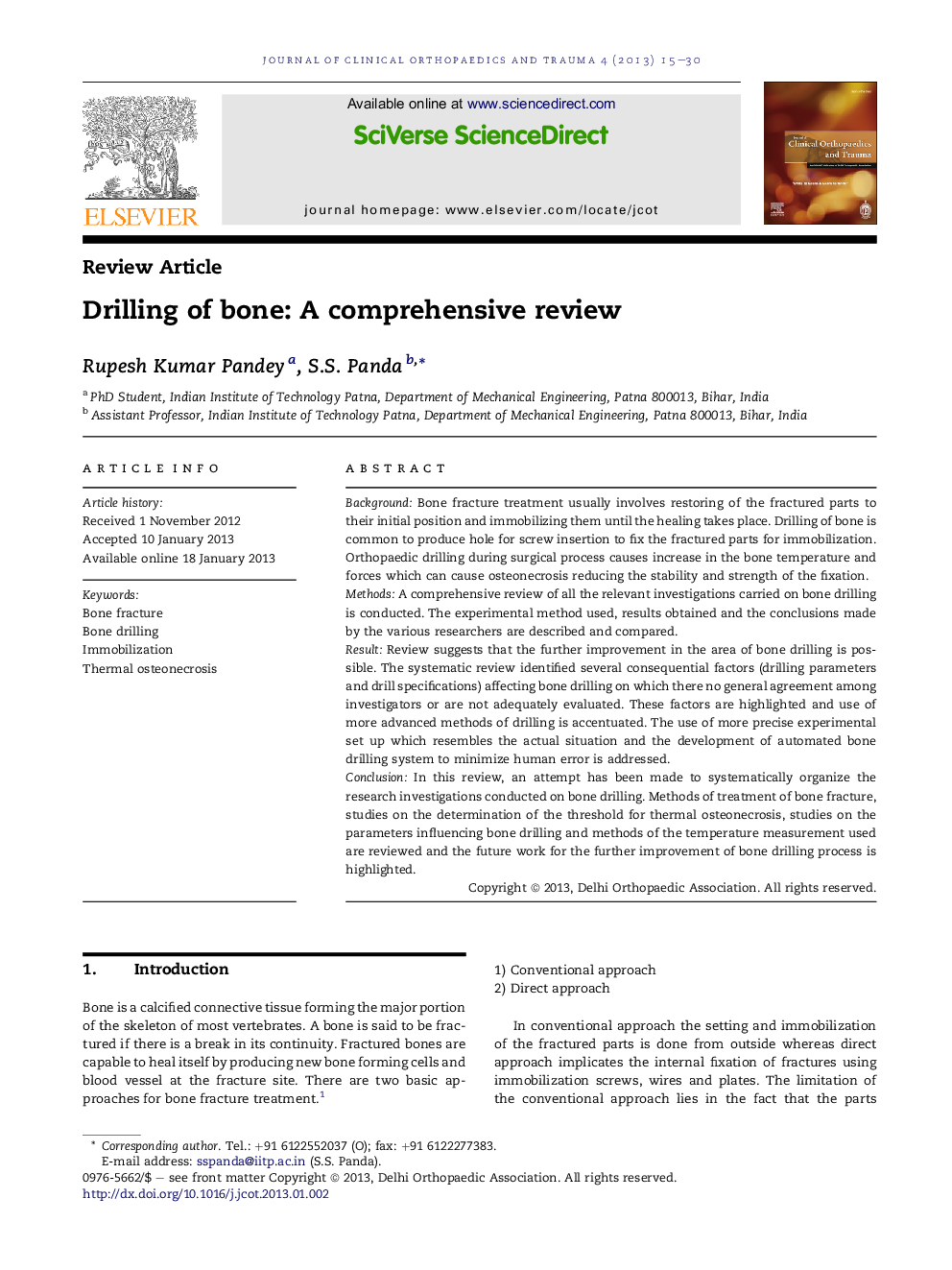| Article ID | Journal | Published Year | Pages | File Type |
|---|---|---|---|---|
| 3245413 | Journal of Clinical Orthopaedics and Trauma | 2013 | 16 Pages |
BackgroundBone fracture treatment usually involves restoring of the fractured parts to their initial position and immobilizing them until the healing takes place. Drilling of bone is common to produce hole for screw insertion to fix the fractured parts for immobilization. Orthopaedic drilling during surgical process causes increase in the bone temperature and forces which can cause osteonecrosis reducing the stability and strength of the fixation.MethodsA comprehensive review of all the relevant investigations carried on bone drilling is conducted. The experimental method used, results obtained and the conclusions made by the various researchers are described and compared.ResultReview suggests that the further improvement in the area of bone drilling is possible. The systematic review identified several consequential factors (drilling parameters and drill specifications) affecting bone drilling on which there no general agreement among investigators or are not adequately evaluated. These factors are highlighted and use of more advanced methods of drilling is accentuated. The use of more precise experimental set up which resembles the actual situation and the development of automated bone drilling system to minimize human error is addressed.ConclusionIn this review, an attempt has been made to systematically organize the research investigations conducted on bone drilling. Methods of treatment of bone fracture, studies on the determination of the threshold for thermal osteonecrosis, studies on the parameters influencing bone drilling and methods of the temperature measurement used are reviewed and the future work for the further improvement of bone drilling process is highlighted.
